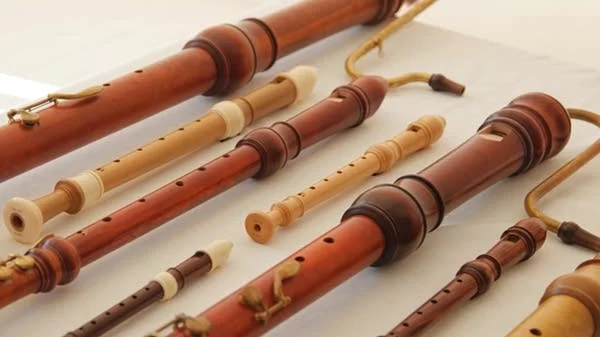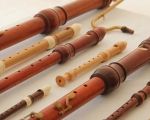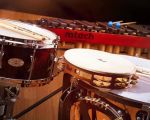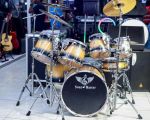
- Origins-of-the-Recorder
- Historical-Evolution-of-the-Recorder
- Who-Invented-the-Recorder
- The-Recorder-in-Modern-Music
- Choosing-the-Right-Recorder
1. Origins of the Recorder
The recorder is a musical instrument with a rich history that spans centuries. Known for its distinct, clear, and sweet tone, it belongs to the family of woodwind instruments, characterized by a whistle mouthpiece and finger holes. Its origins date back to medieval Europe, but the exact moment and person responsible for its invention remain subjects of historical debate.
Early forms of the recorder appear in illustrations and archaeological findings from the 14th century. These primitive instruments were made from wood or bone and were used for folk music and court entertainment alike. The instrument’s simple construction and melodic voice made it accessible and popular across social classes, from peasants to nobles.
1.1 The Recorder’s Unique Design
The recorder's design distinguishes it from other flutes by its internal fipple, a duct that directs air to the edge, producing sound. This design allowed for easier playability compared to transverse flutes, which require more advanced breath control and embouchure. This accessibility helped spread the instrument’s popularity, especially in education and early music performance.
2. Historical Evolution of the Recorder
Over time, the recorder evolved in shape, size, and tonal range. During the Renaissance period (15th-16th centuries), the instrument gained popularity among composers and musicians, and was often featured in consorts—ensembles of recorders in varying sizes. Renaissance recorders were typically made in families of different sizes, from soprano to bass, allowing rich harmonic performances.
2.1 Baroque Refinements
The Baroque era (17th-18th centuries) saw significant advancements in the recorder's design. Craftsmen improved the bore and finger hole placements, resulting in greater dynamic range and intonation. Composers like Johann Sebastian Bach and Georg Philipp Telemann wrote extensively for the recorder, securing its place in classical music history.
2.2 Decline and Revival
Despite its earlier prominence, the recorder saw a decline in the 18th and 19th centuries, largely supplanted by the transverse flute’s technical advantages. However, the 20th century brought a revival of interest, fueled by the early music movement and educational initiatives. Today, the recorder is widely taught in schools and enjoyed by amateur and professional musicians alike.
3. Who Invented the Recorder Musical Instrument?
Determining who invented the recorder musical instrument is not straightforward. Unlike modern instruments that often have a clear inventor, the recorder emerged gradually from simpler whistle-like flutes. It was not the product of a single invention but rather an evolution of design through centuries.
Historical records do not credit one individual but indicate that the instrument’s development was a collective effort across Europe. The earliest depictions from the 14th century, combined with improvements by anonymous artisans, helped shape the recorder as we know it.
3.1 Key Contributors and Innovations
While no single inventor stands out, notable figures contributed indirectly. For example, Michael Praetorius, a German composer and music theorist from the early 17th century, documented the recorder extensively in his work "Syntagma Musicum," providing valuable insights into the instrument’s construction and use. His descriptions helped preserve the recorder’s legacy and influenced later makers.
Thus, the recorder is better understood as a collective heritage, shaped by centuries of musical tradition and craftsmanship rather than a single inventor’s creation.
4. The Recorder in Modern Music
Today, the recorder enjoys a versatile role. Its portability and distinct sound have allowed it to cross genres, from classical and folk to contemporary and even pop music. Modern composers continue to explore its expressive potential, and many educational programs emphasize the recorder as an ideal starter instrument.
Interestingly, viral moments on social media platforms have recently brought renewed attention to the recorder. Amateur musicians and professionals alike share performances that showcase the instrument’s charm and versatility, helping demystify it for new generations.
5. Choosing the Right Recorder
If you’re interested in learning or gifting a recorder, it’s essential to consider quality and purpose. Recorders come in various materials—from plastic models suitable for beginners to handcrafted wooden versions prized by professionals. Each has its unique tone and feel.
For those starting out or teaching music, plastic soprano recorders are affordable and durable. However, players seeking richer sound quality might explore wooden alto or tenor recorders.
Beat Trigger offers a curated selection of recorders tailored to different skill levels and musical needs. Whether you’re a novice or an experienced player, the right instrument can make all the difference in your musical journey.








